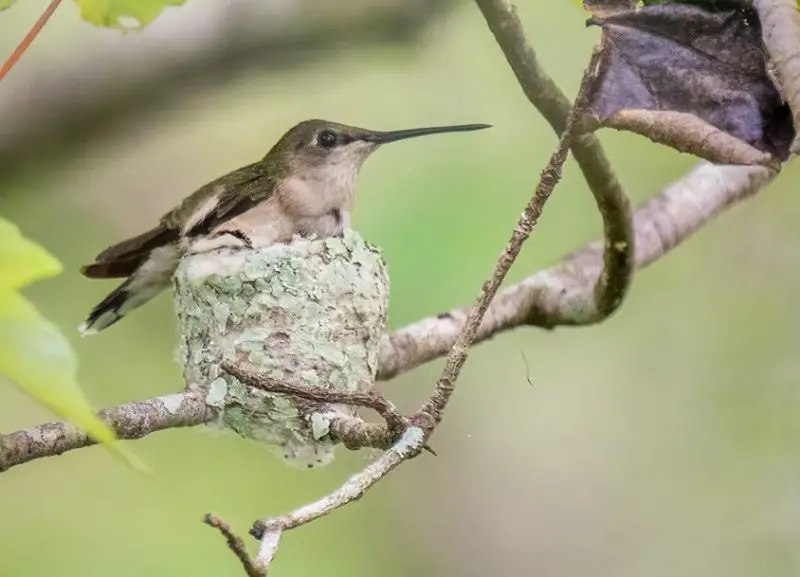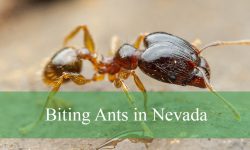Hummingbirds are among the most fascinating creatures in the avian world. These tiny birds exhibit incredible behaviors, especially when it comes to nesting. If you’ve ever wondered how hummingbirds build their nests, where they place them, and how they protect their young, this article will unveil the secrets of hummingbird nests. Let’s dive into some amazing facts you didn’t know!
The Tiny Marvels of Nature: Hummingbird Nests

Hummingbird nests are masterpieces of engineering. Despite their small size, these nests are incredibly sturdy and well-hidden, providing a safe haven for their eggs. The intricate design and thoughtful placement of the nest ensure that the eggs and hatchlings remain protected from harsh weather conditions and predators.
How Small Are Hummingbird Nests?
A typical hummingbird nest is incredibly tiny, often no larger than a walnut or a golf ball. Despite its diminutive size, the nest is built with precision and care. The compact nature of the nest allows it to remain concealed among tree branches and leaves, reducing the risk of detection by predators. The elasticity of the materials used in construction allows the nest to expand slightly as the chicks grow, ensuring they have enough room to develop until they are ready to fledge.
What Are Hummingbird Nests Made Of?
The construction of a hummingbird nest involves an array of natural materials, carefully chosen by the female. One of the most fascinating materials used is spider silk, which plays a crucial role in binding the nest together while allowing flexibility. This elasticity is essential as it enables the nest to stretch as the baby hummingbirds grow. Along with spider silk, the female uses soft plant fibers, lichen, moss, and small twigs to create a strong yet lightweight nest. These materials help with insulation, ensuring the eggs and chicks remain warm and protected from environmental elements.
Where Do Hummingbirds Build Their Nests?
Hummingbirds are highly selective about their nesting sites. The location of the nest is crucial for the survival of their young. A well-chosen site provides protection against predators, harsh weather conditions, and human disturbances.
Preferred Nesting Locations
Hummingbirds generally seek out hidden, secure places to build their nests. They often choose sites with ample shade and protection, such as tree branches that are covered by dense foliage. This helps conceal the nest from predators such as snakes, larger birds, and small mammals. The female also prefers a stable environment, ensuring that the nest is securely attached to a branch that will not sway excessively in strong winds. Proximity to food sources is another key factor. Hummingbirds tend to build their nests near nectar-rich flowers or hummingbird feeders, making it easier for the mother to access food while tending to her young.
Common Nesting Trees and Plants
Different species of hummingbirds have their own preferences when it comes to nesting trees and plants. However, some common choices include oak, pine, and sycamore trees, as these provide sturdy branches with enough cover to hide the nest. Shrubs such as honeysuckle and azaleas are also favored due to their dense foliage and proximity to nectar-producing flowers, offering both shelter and sustenance.
The Nesting Process: Step by Step
The process of building a hummingbird nest is intricate and time-consuming, often taking between five to fourteen days. The female hummingbird is solely responsible for this task, carefully selecting materials and weaving them together to create a strong, flexible structure.
Selecting the Perfect Spot
Before building the nest, the female spends considerable time scouting for the perfect location. She evaluates multiple sites, ensuring that the chosen spot is secure and hidden from predators. She also considers environmental factors such as wind exposure and accessibility to food sources before making her final decision.
Gathering Nesting Materials
Once a location is selected, the female begins collecting various nesting materials. She searches for plant fibers, moss, and other soft elements that will provide insulation. One of the most remarkable materials she uses is spider silk, which acts as a natural adhesive, holding the nest together while allowing it to stretch as the chicks grow. The construction process requires patience and precision, as she carefully weaves the materials together to form a compact, cup-shaped nest.
Shaping and Strengthening the Nest
After assembling the base structure, the female uses her tiny body to press against the materials, molding the nest into a perfect shape. She continuously reinforces the nest with additional layers, ensuring that it remains strong and resilient. This process can take over a week, as she meticulously adds materials to strengthen the walls and create a secure environment for her future eggs.
The Role of Male Hummingbirds in Nesting
Unlike many bird species, male hummingbirds play no role in nesting or raising the young. Their primary role is to attract a mate through elaborate courtship displays. Once mating is complete, the female takes full responsibility for nest construction, egg incubation, and chick rearing. This solitary parenting behavior is common among hummingbirds and allows the male to focus on defending his territory and seeking new mates.
Hummingbird Eggs: Small but Mighty
Hummingbird eggs are among the smallest in the bird kingdom, yet they are incredibly resilient and essential for the species’ survival. The mother invests significant energy into ensuring their safety and proper development.
Size and Appearance of Hummingbird Eggs
Hummingbird eggs are remarkably tiny, often measuring no larger than a jellybean or a small pea. They are typically white and oval-shaped, blending well with their surroundings. Despite their small size, these eggs contain all the necessary nutrients for the developing chicks.
Incubation Period
The incubation period varies by species but generally lasts between fourteen and eighteen days. During this time, the mother carefully regulates the temperature by sitting on the eggs, leaving only for brief periods to feed. Her dedication ensures that the embryos develop properly, increasing the likelihood of successful hatching.
Hatching and Raising the Chicks
Once the eggs hatch, the mother assumes full responsibility for feeding and protecting the fragile chicks. The hatchlings are born blind, featherless, and completely dependent on their mother for warmth and nourishment. She feeds them regurgitated nectar and small insects, providing the essential nutrients needed for rapid growth.
As the chicks develop, their eyes open, and feathers begin to emerge. Within two to three weeks, they start practicing wing movements in preparation for their first flight. By the time they are ready to leave the nest, they have developed the agility and strength needed to navigate the world on their own.
Conclusion
Hummingbird nests are remarkable structures that showcase the intelligence and adaptability of these tiny birds. From selecting the perfect nesting site to meticulously constructing a strong and flexible nest, female hummingbirds display extraordinary dedication and skill. Understanding their nesting habits allows us to appreciate and protect these incredible creatures. If you ever spot a hummingbird nest, remember to admire it from a distance and let nature take its course.






